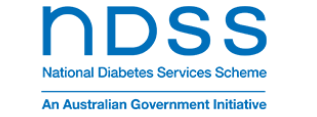
Understanding diabetes can sometimes feel like learning a new language. Here is a list of key diabetes terms and their definitions to help you support a student with type 1 diabetes.
-
Basal insulin
- Insulin that works in the background to keep blood glucose levels steady between mealtimes and overnight.
- Also known as ‘background’ insulin.
-
Bolus insulin
- Insulin that is given at mealtimes when a student eats carbohydrates (or to correct a high glucose level – see Correction dose).
- Bolus doses use rapid-acting insulin to manage the rise in the glucose level following a meal.
-
Blood glucose levels (BGL)
- The amount of glucose in the blood.
-
Blood glucose meter
- A device that measures and stores blood glucose levels.
-
Camp diabetes management plan
- A document developed by the student’s health professional(s) outlining their diabetes requirements for camp, including emergency plans.
-
Correction dose or correction bolus
- An additional dose of rapid-acting insulin to correct a high blood glucose level.
-
Continuous glucose monitoring (CGM)
- A wearable device continually monitors glucose levels, giving alerts if levels are out of target range.
- The device sends the data to a phone, smartwatch, pump or receiver.
-
Designated staff
- School staff trained to provide diabetes management support to students with type 1 diabetes as outlined in the diabetes management plan.
-
Diabetes management plan (DMP)
- A document developed by the young person’s health professional(s) outlining their routine diabetes management needs.
-
Diabetes action (or emergency) plan
- A document outlining the specific steps to treat low or high blood glucose levels, and what to do in emergencies.
-
Fast-acting carbohydrates (carbs)
- Carbs that raise blood glucose levels quickly.
- Examples are jellybeans, glucose tablets, fruit juice or sweetened soft drink.
-
Finger prick blood glucose check
- A lancing device is used to prick the side of a finger to get a drop of blood. The drop of blood is placed on a monitoring strip which is inserted into a blood glucose monitor to check the blood glucose level.
-
Glucagon
- A hormone made by the pancreas to increase blood glucose levels.
- Glucagon can also be given as an injection to treat severe hypos (e.g., when the young person has passed out or is unable to drink or eat).
-
Hypo (hypoglycaemia)
- Blood glucose levels below 4 mmol/L.
- Also called a ‘low’.
-
High (hyperglycaemia)
- Blood glucose levels above 15 mmol/L.
-
Hypo kit
- A portable kit of supplies to treat a hypo (low).
- Essential hypo kit supplies include:
- blood glucose meter, monitoring strips and lancet device
- fast-acting carbs (e.g., jellybeans or juice)
- slow-acting carbs (e.g., muesli bars)
- glucagon injection (if recommended).
-
Insulin
- A hormone made by the pancreas to move glucose from the bloodstream into cells to be used for energy.
-
Insulin pen
- A pen-like device used to inject insulin (used instead of syringes).
-
Insulin pump
- A small, wearable device that can deliver insulin continuously.
- An alternative insulin delivery method to multiple daily injections (MDI).
-
Interstitial fluid
- The fluid surrounding cells, which is used by continuous glucose monitoring to measure glucose levels.
-
Ketones
- Ketones develop when the body uses fat for energy instead of glucose, which can happen when there is not enough insulin.
- Ketones are acidic and high levels are dangerous.
- Action is required if ketones are ≥0.6 mmol/L.
-
Ketone checks
- The most accurate way to check for ketones is to use a blood glucose meter that also checks for blood ketones.
- Another option to check ketones is by urine, using urine ketone monitoring strips.
-
Lancet device
- A device used to prick the side of a finger to draw a blood drop for blood glucose checking.
-
Multiple daily injections (MDI)
- Injecting insulin several times a day using an insulin pen or syringe.
-
Pancreas
- An organ in the body that helps regulate blood glucose by producing hormones (insulin and glucagon) and digestive enzymes to break down food.
-
Slow-acting carbohydrates (carbs)
- Carbs that raise blood glucose levels slowly.
- Examples are a muesli bar, banana or milk.
-
Type 1 diabetes
- An autoimmune condition where the insulin-producing cells in the pancreas are destroyed and cannot make insulin, resulting in high blood glucose levels.
-
Type 2 diabetes
- A progressive condition where the pancreas cannot make any or enough insulin, or the insulin it makes does not work very well, resulting in high blood glucose levels.
Last Updated: September 2025.


